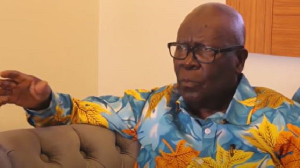Growing up in my hometown of Sandema as a child, death was a seldom issue as it was quite rare for people dying at a fast rate as these days.
When eventually there was death in my family or my immediate surroundings, it was usually people of age and this was in the middle 90s.
When someone died and was to be buried, we were asked to go away from home, at least to a nearby shade.
The first time I saw a corpse was in church when I was a mass server in a requiem mass. I will grow up to witness more dead bodies usually in Christian services for the dead but as an adult by my tradition, it is still very uncommon for me to see a dead body even if they are family.
Yet now, whether I like it or not, I am exposed daily to seeing dead bodies daily, through the phenomenon I call morbid sensationalism in the media. Morbid sensationalism is the use of shocking details to cause a lot of interest in matters relating to death.
In the last few years, Ghanaians through the various media, constantly expose horrifying graphic details of the death of people whether at accidents scenes, at burial services, at the mortuary or elsewhere without regard to the sensibilities of others and the Ghanaian culture that respects the dead.
But how did we as a people arrive at this point? Ghanaians love their funerals as part of our culture and social events but not the death of anyone.
However, the commodification of funerals in Ghana to the extent funerals now have become an economic issue has without doubt been at the forefront of morbid sensationalism.
Thus, for any funeral to gain publicity and thus attract “investors” or “donors” there has to be a certain amount of publicity. Also, the social status that came with peoples’ funerals being covered by the traditional media, whether print or electronic could also be a contributory factor to the genesis of morbid sensationalism.
However, the real cause of morbid sensationalism has been the advent of social media which I will broadly call the new media and its ability to influence the mainstream or traditional media.
With the advent of the new media, such platforms such as Facebook, Instagram, Twitter, WhatsApp, etc have given individuals the ability to share information to large audiences than never before.
In an industry that regulation is largely uncontrolled, it is not surprising then that people continue to post and share the dead bodies of people with impunity, without any regard to the sensibilities of relatives or the general public. The new media eventually is giving out information at a faster rate than the traditional media.
The traditional media that also has largely thrived on sensationalism naturally had to respond to the growth of the new media so as not to lose its relevance and has sadly fallen into the despicable practice of morbid sensationalism!
In a media industry where journalistic standards and ethics continue to depreciate, this is not unexpected, especially bearing in mind that media house owners and their employees are guided more about consumerism rather than standards and ethics.
Morbid sensationalism is not only alien to our culture but also illegal. Going forward, we have to return to our roots and give respect to the dead. This we can do by changing our attitudes towards the dead.
Also, regulation of the content of the users of social media and their punishment such as blocking such recalcitrant uses may be necessary. Again, the National Media Commission must be empowered to be more biting especially as regards standards and ethics.
Finally, journalists should abide by their professional ethics and not succumb to the consumerism policies of their employers especially when such policies are at variance with our collective identity as Ghanaians.
BY: Abakisi Akangagnang Lawrence
IIRaCS, UDS-TAMALE
Opinions of Saturday, 17 February 2018
Columnist: Abakisi Akangagnang Lawrence



















